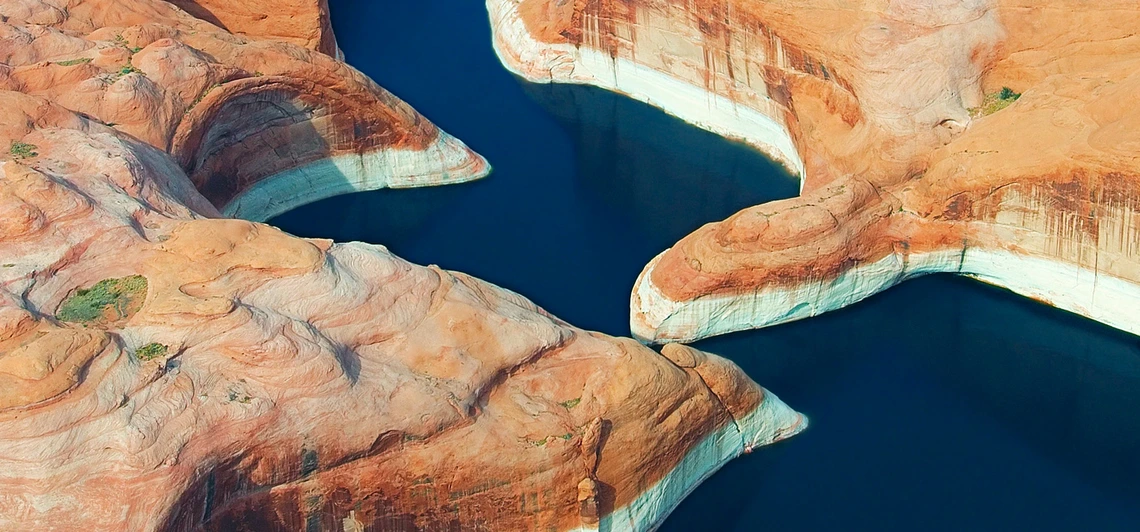Largest Western Lakes Shrink to Record Lows
Aug. 13, 2021
Image

Water levels at the Great Salt Lake, Lake Mead, and Lake Powell fell to record lows in July. Persistent drought conditions throughout the West are especially dire in Utah, where the US Drought Monitor indicates that nearly 100% percent of the state is experiencing the two most severe drought levels. According to the Utah Department of Natural Resources, the drought has accelerated the Great Salt Lake’s gradual decline over the years, from an all-time high of 4,211.65 feet in 1986. On July 24, the US Geological Survey announced that average daily lake levels had decreased to about one inch below the 1963 record of 4,191.4 feet. The drop from the lake’s historic average elevation to the July 24 level is about eight and a half feet, which translates to a lake area loss of about 44 percent.
The country’s largest reservoir, Lake Mead, had fallen to 1,067 feet in elevation as of July 23—its lowest level since Colorado River water started filling the lake in the 1930s. The water level is expected to drop to 1,064 feet by the end of the year. By the end of 2022, it is forecast to drop even further to 1,047 feet. Lake Powell, the second-largest reservoir in the US, saw its water level fall to 3,554.51 feet, which is 0.6 feet below the record low set in April 2005. WRRC Director Sharon B. Megdal, who was quoted in a Washington Post article on western lake levels, stated that the record lows of Mead and Powell indicate “water users throughout the Colorado River Basin … must prepare for lower Colorado River water deliveries over an extended period of time.”
According to the US Bureau of Reclamation (Reclamation), the level of Lake Powell would almost certainly fall below the elevation at which it is safe to operate the dam’s electric turbines without immediate action. Releasing more water from three upstream reservoirs—a six-month effort by Reclamation to raise the lake level approximately three feet by the end of 2021—began in July. Water releases from Flaming Gorge Reservoir, Blue Mesa Reservoir, and Navajo Lake, on three Colorado River tributary rivers, are being increased on an emergency basis through December 2021 and releases could extend into 2022. This is the first use of the emergency federal intervention agreed to by the states in the Upper Colorado River Basin in the 2019 Drought Contingency Plan. The emergency releases, totaling 181,000 acre-feet, will stave off further water-level drops, but protecting the turbines could require an additional one-two million acre-feet of water over the next two years. Such additional water releases would require the agreement of the Upper Basin states to a new long-term plan.
Image: Lake Powell, Rainer Krienke, unsplash.com

